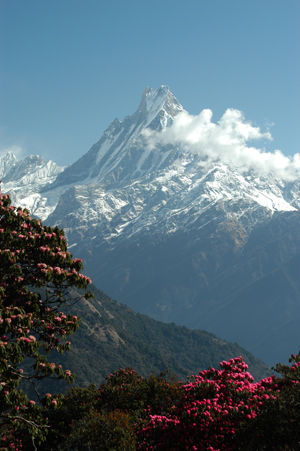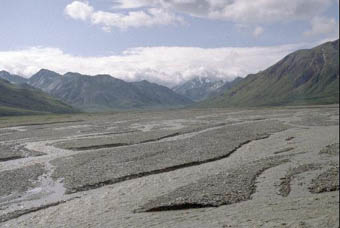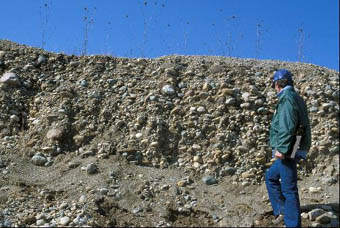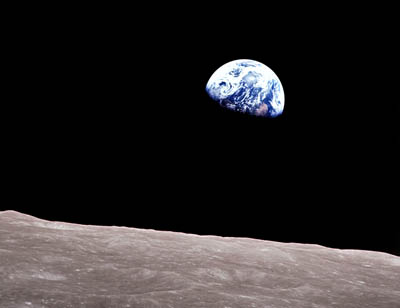Click on image for full size
Courtesy of Kip Hodges
Storms Shaped the Himalayan Mountains
News story originally written on November 9, 2008
Rain is important for many reasons. It can even impact the world’s largest mountains.
New research suggests that strong storms called monsoons shaped the development of the Himalayan Mountains over millions of years.
In Asia, where the Himalayan Mountains are located, the climate is affected by seasonal winds that carry moist air over the Pacific Ocean into East Asia and over the Indian Ocean into South Asia. These moist winds make monsoons. Scientists don’t know when this pattern first started, but evidence suggests that it was at least 24 million years ago.
To figure out how monsoons have changed high in the Himalayas over the past 24 million years, scientists looked to the bottom of the ocean. They studied the chemistry of layers of sediments from the seafloor of the South China Sea. The sediments were weathered from mountains, and then transported in the Pearl River system in China before settling down on the seafloor.
The chemistry of the seafloor sediments shows how much of the mountain rock weathered away over time. The scientists found that more monsoons lead to more weathering of rocks.
The Tibetan Plateau, where the Himalayas are located, is the largest high-altitude place on Earth. Many scientists believe that when the Tibetan Plateau uplifted, the monsoons became more intense. However, the information that scientists found in the sediments does not support that idea.
The chemistry of the sediments suggests that there was an increase in East Asian monsoon intensity from 23 to 10 million years ago, then monsoons became weaker until about 4 million years ago. After that, monsoons became more intense again.
"Earth is a complex system," said Kip Hodges, one of the scientists who worked on this research. "We cannot begin to fully understand mountain building without appreciating the roles of the hydrosphere and atmosphere in the evolution of mountain ranges."















